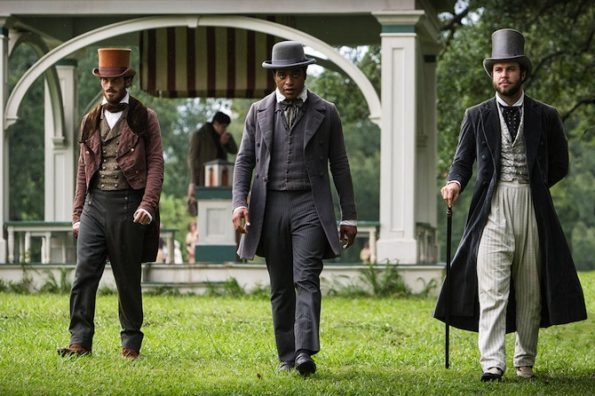Search
To search for an exact match, type the word or phrase you want in quotation marks.
A*DESK has been offering since 2002 contents about criticism and contemporary art. A*DESK has become consolidated thanks to all those who have believed in the project, all those who have followed us, debating, participating and collaborating. Many people have collaborated with A*DESK, and continue to do so. Their efforts, knowledge and belief in the project are what make it grow internationally. At A*DESK we have also generated work for over one hundred professionals in culture, from small collaborations with reviews and classes, to more prolonged and intense collaborations.
At A*DESK we believe in the need for free and universal access to culture and knowledge. We want to carry on being independent, remaining open to more ideas and opinions. If you believe in A*DESK, we need your backing to be able to continue. You can now participate in the project by supporting it. You can choose how much you want to contribute to the project.
You can decide how much you want to bring to the project.

There was a time in film when the aestheticizing of suffering on camera provoked a lengthy and heated moral debate. Part of this discussion was focused on the famous “travelling by Kapò”, and specifically in the famous article “De l’abjection” by Jacques Rivette published in Cahiers du cinema in 1961. Godard’s phrase “even a travelling is a question of morals” gained notoriety within this debate. The third film by Steve McQueen, 12 Years a Slave, invites this question to be recouped. After Hunger, and Shame, expectations were running high. The challenge seemed monumental: to relate the life of Solomon Northup, who as a free, black man was kidnapped and sent for twelve years to a cotton plantation as a slave, until he managed to gain his freedom and recount it all in a book.
The valuations of 12 Years a Slave are positive, though for some critics the overly explicit violence called for a greater use of narrative ellipsis. For others, it’s the very realism of the humiliation that stands out. A close up of a shoulder marked like a hyperrealist photograph of body art. The subject matter of the British artist and filmmaker continues to be the exploration of the body (flesh) and the mind.
But McQueen has changed in status and scale. The impression is that this rise up the industry’s ladder totally modifies the expectations that some of us had built up (the “vehicle” of Michael Fassbender is already way too potent in the market). However, McQueen couldn’t sign a production that floundered even if he tried. In short: 12 Years a Slave is a great film albeit that fits placidly within the stereotypes of hackneyed “Hollywood realism”.
Instead of questioning the means that make it possible for him to make his statement, McQueen uses it to hit hard. The principal problem lies in its aesthetics that are closer to naturalism than realism. The distinction between both is pertinent here: the first seeks to recreate faithfully, paying great attention to detail, to move and excite with a narrative full of plasticity. Realism, however, aspires to this very plasticity having a more tactical or strategic meaning at the service of a historical dialectic.
The main objection regarding 12 Years a Slave is that it lacks the latter. It presents instead a lineal history that vividly transmits the sweat of bodies through fiction. This is possibly the film with the greatest subjective, personal and biographical involvement of its author from the point of view of content, but in the formal question, I feel as if it’s one step removed.
The emphasis on the horrors of Solomon Northup’s story doesn’t manage to make us forget about other possibilities when dealing with such a thorny subject as slavery, above all coming from someone with more than just a few artistic discourses and methods at his disposal. It’s not by any means a case of theorising about the production, but maybe of introducing a channel of transmission that stemming from the intellectual impact, stimulates critical thought. 12 Years a Slave moves the audience but after a while one forgets it. I don’t see it being used as a “political weapon” by any oppressed collective so much as winning the Oscars and “laundering” consciences.
There are many shots where the director let’s himself get carried away with the chosen genre; from a landscape with boats made on the computer, to the sweat and tears of a vibrant Chiwetel Ejiofor (Solomon Northup) falling in an opportune and precise manner. Naturalism. This averts a more political (ergo more historical) utilization of the film. There are great examples of this in the history of film (cases of realism achieved through documentaries and fiction, or a mixture of both). One magnificent example the director criticised by Rivette, the Italian Gillo Pontecorvo, who after Kapò (1960) made The Battle of Algiers (1966) and Burn! (1969), precursors of the genre of political film and the so-called Third Cinema.

Peio Aguirre writes about art, film, music, theory, architecture and politics, amongst other subjects. The genres he works in are the essay and meta-commentary, a hybrid space that fuses disciplines on a higher level of interpretation. He also (occasionally) curates and performs other tasks. He writes on the blog “Crítica y metacomentario” (Criticism and metacommentary).
"A desk is a dangerous place from which to watch the world" (John Le Carré)